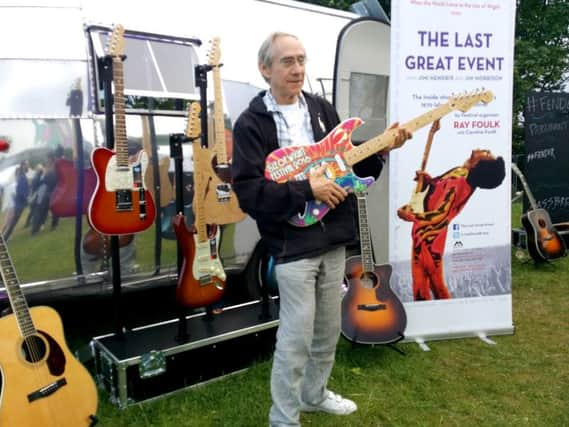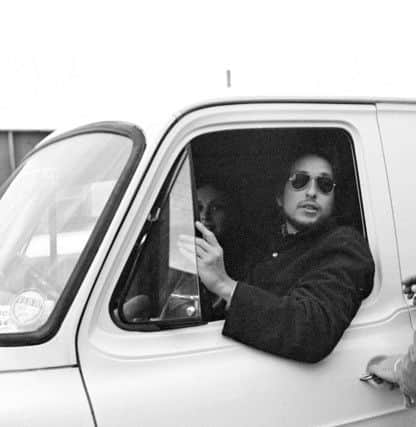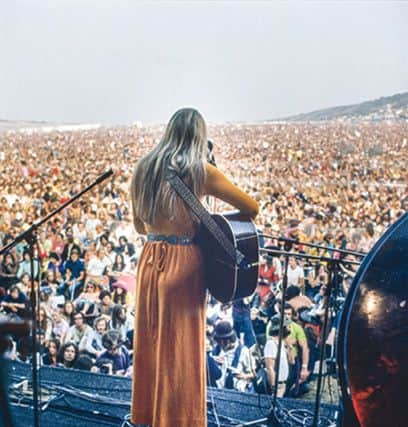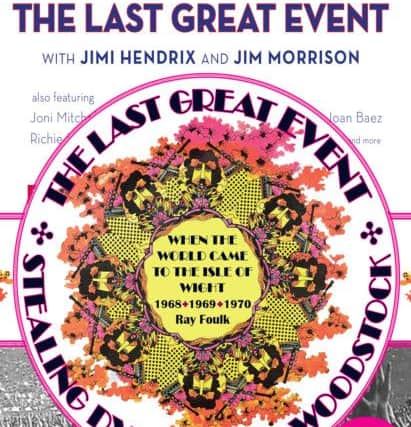Portsmouth Guildhall gets ready to stage the astonishing story of the original Isle of Wight Festival


With those five words in a telegram Ray Foulk knew he had pulled off a huge coup – getting Bob Dylan to agree to his first live performance in more than three years, and it was to be at the 1969 Isle of Wight Festival.
Since being involved in a motorbike accident in 1966, the enigmatic singer-songwriter had continued releasing albums but had stopped touring.
Advertisement
Hide AdAdvertisement
Hide AdRay and his brothers Ronnie and Bill were instrumental in the creation of the original Isle of Wight Festival that ran in 1968, ’69 and ’70.


In just two short years, the festival went from a hastily-arranged event by a group of naive amateurs to an enormous gathering that came to define the hippy era as more than half a million people piled onto the island.
From today, and to coincide with the release of Ray’s new book, When The World Came To The Isle Of Wight – The Last Great Event, Portsmouth Guildhall’s Portsmouth Music Experience is hosting a year-long exhibition looking back at that momentous period.
But it is a curious fact that the festival’s roots were actually as a fundraiser for the Isle of Wight Indoor Swimming Pool Association (IWISPA).
Advertisement
Hide AdAdvertisement
Hide Ad‘When all the publicity about hippies started they got cold feet, and they said they didn’t want to be involved,’ says Ray.


While IWISPA distanced itself from the event, it still attracted Jefferson Airplane and The Crazy World Of Arthur Brown to play to a crowd of around 10,000 on a rainy, windswept night.
‘Jefferson Airplane and Arthur Brown might have been quite big names and pack out concert halls across the country,’ recalls Ray now, ‘but when it comes to drawing names across to the island, they didn’t cut it.’
However, the festival was enough was enough of a success for the brothers to start planning another, larger one for the following year. And this time, nothing less than one of the biggest stars on the planet would do as a headliner – Bob Dylan.
Advertisement
Hide AdAdvertisement
Hide Ad‘You’ve got to get people like Dylan if you wanted to get people to come across – that’s what we really learned from the first festival and what made us reach for the superstars.


‘Dylan of course, you had people not just coming across the Solent, but from across the world, as they thought it might be their only chance to see him. It was massive.
‘I was incredibly naive – I didn’t really know much about Bob Dylan – my brother Ronnie was very keen on him.
‘From what I’d heard, he hadn’t performed in three years and he was one of the biggest stars around, so why would he come to us?’
Advertisement
Hide AdAdvertisement
Hide AdRonnie made the initial overtures to Dylan’s management, and when they weren’t flatly rebuffed Ray would call them up every few weeks to ask again.


‘I persevered and got very enthusiastic very quickly,’ says Ray. ‘I was listening to him and getting bowled over by how good he was, I’d never listened to him properly before that.’
And securing Dylan remains Ray’s favourite memory from that period.
‘I can remember the phone call as if it was yesterday, Bert Block, his manager said “I’ve been trying to get hold of you and I’ve sent you a telegraph. Can I read it to you? Dylan and Band will accept”.
Advertisement
Hide AdAdvertisement
Hide Ad‘Then he said we need you in New York next week – on Tuesday, Dylan wants to meet you. At that point, I had to sit down.’
The festival ultimately drew 150,000 when it took place from August 29 to 31 and also featured The Who, The Moody Blues and Joe Cocker on its bill.
Ray recalls looking at the crowd from backstage on Friday night: ‘The moment you could see the audience it came as a real shock. I wasn’t expecting it, my full field of vision was people. It was a feeling of, wow, we’d done it, this is it. It was a mixed feeling of wonder and helplessness. It was a mass of humanity.’


Woodstock Festival took place in upstate New York, near where Dylan was living, earlier the same month.
Advertisement
Hide AdAdvertisement
Hide Ad‘Apparently they put that in Woodstock to try to get Dylan to play there, but we really didn’t know much about Woodstock until the film came out. There’s a lot of mythology about Woodstock.
‘At the time, it wasn’t even heard about in this country until the film came out – I think there was an item on the news at the time, but it was only kind of a footnote.’
By the time of the 1970 festival, the Isle of Wight had grown to a five-day, star-studded event, with Joni Mitchell, Miles Davis, The Doors, Sly and The Family Stone, and in what turned out to be his last UK appearance before his untimely death, Jimi Hendrix. It drew about 600,000 people, and as Ray puts it: ‘We came up with a massive list of artists, that was so big people couldn’t resist, and I guess we ended up going a bit over the top.’
Unfortunately the festival became a victim of its own success.
Advertisement
Hide AdAdvertisement
Hide AdDespite police and council reports vindicating the organisers, a private member’s bill was passed in parliament preventing gatherings of more than 5,000 people on the island without a special licence, drawing a line under this incredible period.
EXHIBITION DETAILS
THE exhibition is part of the greater permanent Portsmouth Music Experience Gallery – a gallery that celebrates the city’s rich music heritage from the 1950s to the present.
Over the years many excellent local and visiting musicians have played at city venues such as the Savoy, Kimbell’s, the Rendezvous, the Tricorn, the South Parade Pier, the Birdcage and the Guildhall, including the Beatles, the Rolling Stones, Bob Dylan, Pink Floyd, Beach Boys, Led Zeppelin and many more. The gallery is managed and ran by a group of volunteers.
The Portsmouth Music Experience is free of charge to enter, however there is a £3/£2.50 charge for The Isle of Wight Festivals Exhibition.